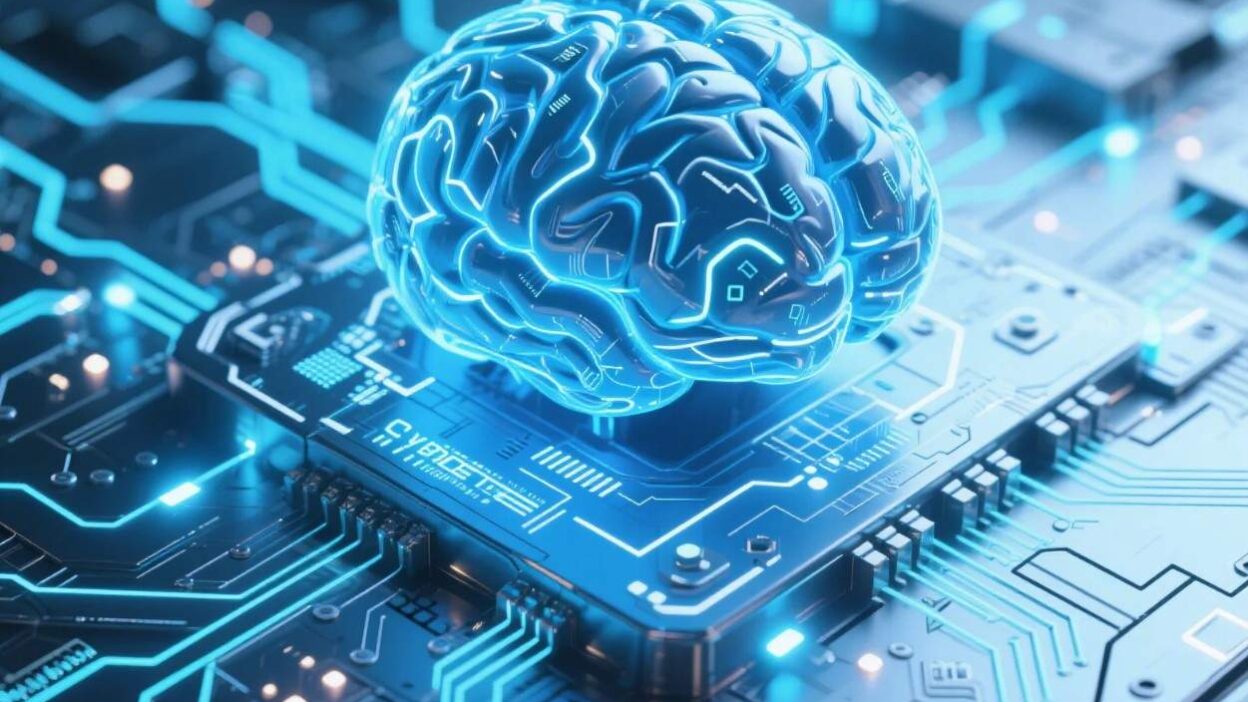The Quest to Recreate Human Consciousness in Silicon
Brain emulation represents one of humanity’s most ambitious scientific endeavors: the complete computational recreation of a human brain’s structure and function. This content examines the meaning of brain emulation, distinguishing it from artificial intelligence, exploring current methodologies, and analyzing the profound implications for neuroscience, technology, and society. Through examining both theoretical frameworks and practical challenges, we uncover why brain emulation sits at the intersection of cutting-edge science and philosophical inquiry about the nature of consciousness itself.
The Digital Mind
Imagine scanning your brain with such precision that every neuron, every synapse, and every molecular interaction could be mapped and recreated in a computer. This digital twin of your mind would theoretically think, remember, and experience consciousness exactly as you do. This is the promise and challenge of brain emulation—a concept that transforms science fiction into a serious scientific pursuit.
Brain emulation, also known as whole brain emulation (WBE) or mind uploading, refers to the hypothetical process of creating a functionally equivalent computational model of a specific brain. Unlike artificial intelligence systems designed to mimic intelligent behavior, brain emulation aims to replicate the actual biological processes that generate consciousness, memory, and personality in a particular individual.
Defining Brain Emulation: Beyond Silicon Dreams
To understand brain emulation’s true meaning, we must first distinguish it from related concepts that often blur together in popular discourse. Brain emulation is not simply creating smart computers or artificial intelligence. While AI systems can perform specific cognitive tasks—sometimes better than humans—they operate on fundamentally different principles than biological brains.
Brain emulation requires three critical components: comprehensive mapping of brain structure, understanding of neuronal function, and sufficient computational power to simulate the resulting network. The process would begin with scanning a brain at the cellular or subcellular level, creating a detailed map of approximately 86 billion neurons and their trillion connections. This connectome would then be translated into a computational model that simulates the electrochemical processes governing neuronal behavior.
The distinction between brain emulation and brain simulation deserves attention. Brain simulation models general principles of neural networks to understand how brains work, while brain emulation attempts to recreate a specific brain’s exact structure and function. The difference resembles that between studying weather patterns generally versus predicting tomorrow’s weather in a specific location.
The Technological Landscape: Current Approaches and Limitations
Modern neuroscience has made remarkable strides toward brain emulation, though we remain far from achieving human-level whole brain emulation. Current efforts focus on simpler organisms and brain regions, providing crucial stepping stones toward more complex goals.
The most successful brain emulation to date involved the nematode worm Caenorhabditis elegans, whose 302-neuron nervous system was completely mapped and partially emulated in the OpenWorm project. While this represents a significant achievement, the gulf between 302 neurons and 86 billion remains vast. Even fruit fly brains, with roughly 100,000 neurons, present formidable challenges that researchers are actively addressing.
Scanning technology represents the first major hurdle. Current methods like functional magnetic resonance imaging (fMRI) and electron microscopy can reveal brain structure at various scales, but achieving the nanometer-level resolution needed for complete neural mapping remains technically challenging. Advanced techniques like serial block-face scanning electron microscopy can image neural tissue at synaptic resolution, but processing times measured in years make whole-brain scanning impractical with current technology.
Computational requirements present equally daunting challenges. Conservative estimates suggest that emulating a human brain would require computing power equivalent to millions of today’s most powerful processors running continuously. The Blue Brain Project’s simulation of a cortical column—containing roughly 31,000 neurons—requires supercomputer resources, highlighting the exponential scaling challenges ahead.
Methodological Approaches: Multiple Paths to Digital Consciousness
Researchers pursue brain emulation through several distinct methodological approaches, each offering unique advantages and limitations. Understanding these approaches illuminates both the complexity of the challenge and the creativity of proposed solutions.
The destructive scanning approach involves slicing preserved brain tissue into extremely thin sections, imaging each slice with electron microscopes, and computationally reconstructing the three-dimensional neural network. While this method could theoretically achieve the resolution needed for complete emulation, it requires the death of the original brain, raising obvious ethical concerns and practical limitations for human applications.
Non-destructive scanning methods attempt to map living brains using advanced imaging techniques. Approaches like diffusion tensor imaging can trace neural pathways in living subjects, while newer techniques like expansion microscopy physically expand brain tissue to enable higher-resolution imaging. However, current non-destructive methods cannot achieve the synaptic-level resolution that complete emulation likely requires.
The gradual replacement approach, popularized in philosophical thought experiments, proposes replacing biological neurons with functionally equivalent artificial ones over time. This method would theoretically maintain continuity of consciousness while transitioning from biological to artificial substrate. While conceptually elegant, implementing this approach requires technologies that remain decades away from practical realization.
Philosophical and Ethical Dimensions: The Hard Questions
Brain emulation raises profound philosophical questions that extend far beyond technical challenges. The concept forces us to confront fundamental questions about consciousness, identity, and the nature of human experience.
The question of consciousness presents perhaps the greatest philosophical challenge. Would a perfect brain emulation actually experience consciousness, or would it merely simulate conscious behavior? This distinction, known as the hard problem of consciousness, remains one of philosophy’s most enduring puzzles. Different philosophical positions suggest radically different answers, from functionalist views that consciousness emerges from information processing patterns to more restrictive views requiring specific biological substrates.
Personal identity concerns arise when considering whether an emulated brain would truly be the same person as the original. If both the biological brain and its emulation existed simultaneously, which would represent the “real” person? These questions echo classical philosophical puzzles while adding new dimensions unique to brain emulation scenarios.
Ethical considerations encompass a broad range of concerns, from consent and privacy to the rights of emulated beings. If brain emulations achieved consciousness, they would presumably deserve moral consideration and legal protections. The potential for copying, modifying, or deleting emulated minds raises unprecedented ethical questions about digital personhood and the boundaries of acceptable treatment.
Implications and Applications: Transforming Human Experience
Successful brain emulation would revolutionize multiple domains of human knowledge and experience. The implications extend from advancing neuroscience research to fundamentally altering concepts of mortality and human enhancement.
In neuroscience, brain emulations would provide unprecedented research tools. Scientists could study disease processes, test treatments, and explore brain function with experimental control impossible in biological subjects. Conditions like Alzheimer’s disease, Parkinson’s disease, and psychiatric disorders could be modeled with perfect fidelity, potentially accelerating medical breakthroughs.
The possibility of digital immortality represents perhaps the most profound implication. If consciousness could be preserved in digital form, death might become optional rather than inevitable. However, this possibility raises complex questions about resource allocation, social inequality, and the meaning of human life when extended indefinitely.
Educational and professional applications could transform how humans acquire knowledge and skills. Emulated brains might learn at accelerated rates, share experiences directly, or access vast databases of information instantaneously. These capabilities could revolutionize education, training, and professional development.
Current Research and Future Directions
Contemporary brain emulation research spans multiple disciplines and institutions worldwide. The European Union’s Human Brain Project represents one of the largest coordinated efforts, combining neuroscience, computing, and engineering expertise to advance brain simulation capabilities. Similar initiatives in the United States, China, and other countries reflect global recognition of brain emulation’s potential importance.
Recent advances in artificial intelligence, particularly in neural network architectures and deep learning, provide both inspiration and practical tools for brain emulation research. While current AI systems operate differently from biological brains, techniques for training large-scale neural networks offer insights into managing the computational complexity of brain emulation.
Emerging technologies like quantum computing might eventually provide the computational power needed for full-scale brain emulation. Quantum systems could potentially simulate quantum mechanical processes in biological neurons more efficiently than classical computers, though practical quantum computers capable of such tasks remain years or decades away.
Challenges and Limitations: The Road Ahead
Despite significant progress, numerous challenges must be overcome before brain emulation becomes practical reality. Technical limitations span from scanning resolution to computational efficiency, while theoretical gaps in understanding consciousness and neural computation present equally formidable obstacles.
The measurement problem remains fundamental: current scanning techniques cannot simultaneously capture all relevant aspects of neural function at sufficient temporal and spatial resolution. Neurons operate through complex biochemical processes involving ion channels, neurotransmitters, and intracellular signaling cascades that current imaging methods cannot fully characterize.
Computational complexity presents another major challenge. Even if perfect brain scans became available, simulating the resulting neural networks would require computational resources orders of magnitude beyond current capabilities. Developing more efficient simulation algorithms and specialized hardware represents crucial research priorities.
Our incomplete understanding of neural computation compounds these technical challenges. While neuroscience has revealed much about individual neurons and small circuits, the principles governing large-scale brain networks remain poorly understood. Brain emulation may require theoretical breakthroughs in neuroscience as significant as the technical advances in scanning and computing.
Conclusion: The Meaning of Mind in the Digital Age
Brain emulation represents more than a technological challenge—it embodies humanity’s quest to understand consciousness and transcend biological limitations. The concept forces us to examine fundamental assumptions about mind, identity, and human nature while pushing the boundaries of scientific knowledge and technical capability.
Whether brain emulation will ultimately succeed remains an open question. The technical challenges are formidable, the philosophical questions profound, and the ethical implications far-reaching. However, the pursuit itself has already advanced our understanding of the brain and inspired innovations in neuroscience, computing, and artificial intelligence.
The meaning of brain emulation extends beyond its literal definition to encompass broader questions about human enhancement, digital existence, and the future of consciousness in an increasingly technological world. As research continues and capabilities advance, society must grapple with these implications while ensuring that the development of such powerful technologies serves humanity’s best interests.
In considering brain emulation’s meaning, we confront perhaps the deepest question of all: what does it mean to be human in an age when minds might exist independent of biological brains? The answer will shape not only the future of brain emulation research but our understanding of consciousness, identity, and human potential in the digital age.



